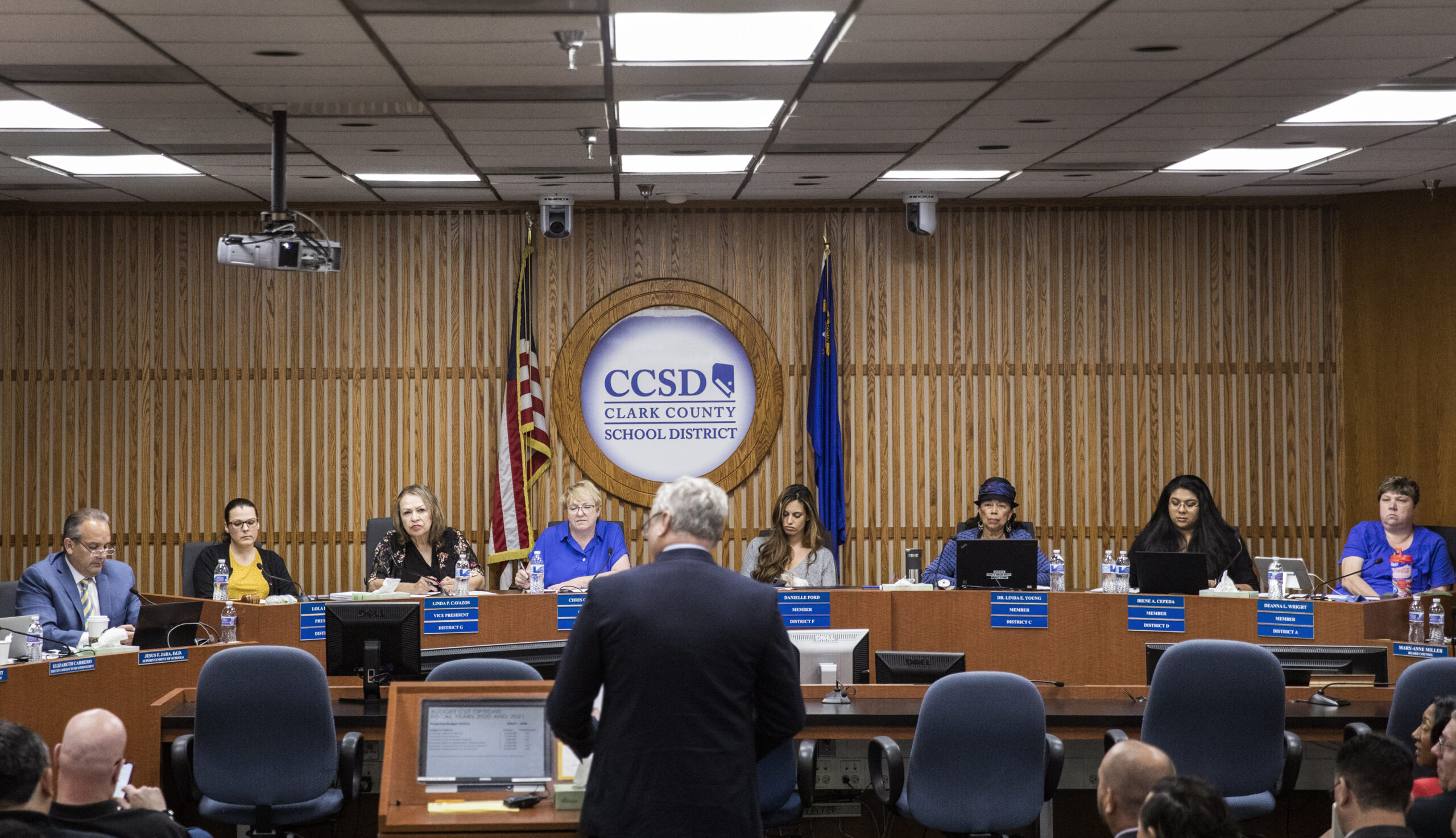Amid strike threats, Clark County School District taking small steps to end fiscal watch

In spite of a looming teacher strike and millions of dollars in budget cuts, the Clark County School District is still moving forward with plans to modestly add to its budgetary reserve account as part of a requirement to end state oversight of the district’s finances.
Monday’s meeting of the Committee on Local Government Finance — an appointed board within the Department of Taxation that oversees local governments under fiscal watch, or state oversight of finances — was less contentious than the meeting last month that saw the board spar with district Chief Financial Officer Jason Goudie over an alleged lack of budgetary information.
Although final budget numbers are still pending for a variety of reasons — including ongoing negotiations with employee unions and a pending lawsuit over an extension of the state’s payroll tax — Goudie said the district’s budget was otherwise performing relatively well. But he cautioned that the district was still facing immense pressure to raid the ending fund balance to make up for shortfalls in other areas — a possibility he called “very dangerous.”
“I continually get pressure, the superintendent continually gets pressure about making changes primarily for union pay for employees, just pulling it out of the ending fund balance, and covering it there and figuring out what goes on later,” he said during the meeting. “I think this group has made it clear, and it's certainly clear to me, that that’s not an acceptable method of funding a recurring payment.”
Fiscal watch is a state-mandated budgetary monitoring condition; it doesn’t mean the state takes over any operations of the district, but adds additional requirements that the district (or any other entity under fiscal watch) submit monthly cash-flow statements and provide periodic reports to the committee (state law allows for many additional powers, such as temporary tax hikes and full state control of a local government if it faces a “severe” fiscal emergency).
Regardless of what actions the state’s largest school district takes to address the long-threatened strike by the Clark County Education Association and to reach agreements with them and other employee unions, the district is likely to stay under fiscal watch for the foreseeable future.
The district was placed on fiscal watch by the committee in January 2018, after it had lowered its ending fund balance to just 0.78 percent ($6.4 million) of its general fund to address a $60 million budget shortfall. State regulations typically require a local government to reach a 4 percent ending fund balance before being taken off of fiscal watch.
Goudie reiterated that the district has made great strides toward increasing the ending fund balance since the 2018 low mark, raising the ending fund reserve to 2 percent of the district’s budget with plans to annually raise it 0.25 percent until hitting the required 4 percent reserve figure. But he cautioned that moving any faster toward a 4 percent reserve would be difficult given other funding obligations facing the district.
“As I mentioned last time, we are moving as quickly as we can to get there,” he said. “But with the negotiations and the funding that’s required for employees as well as other programs, I think it’s a pretty big challenge to move more than $6 or $7 million a year into that category.”
Goudie also said that in spite of the ongoing public tension and promises of a strike from the Clark County Education Association (the district filed a request for an injunction Monday in District Court), the district was close to reaching deals with other employee organizations who have not joined calls for a strike.
According to budget documents submitted to the committee, the district plans to have a $53.9 million ending fund balance at the end of the 2019-2020 budget cycle; slightly above an earlier projection of $52.7 million made as part of the district’s initial “final budget” (which varies based on student enrollment and other factors).
Committee Chairman Marvin Leavitt, who previously said he was “disappointed” with the district’s response to requests for budgetary information, said he was sympathetic to the pressures on the district to immediately use its reserve funds and not built up a reserve.
“It will not take much of an emergency situation, regardless of the type it was, to put you into a deficit position,” he said.
